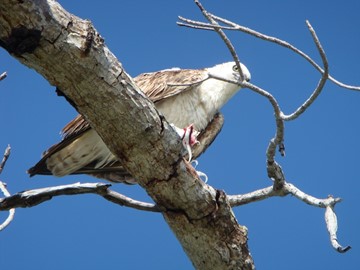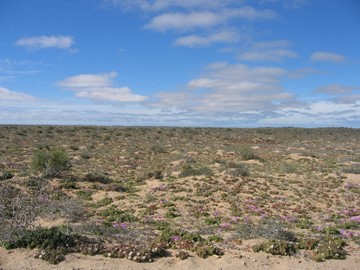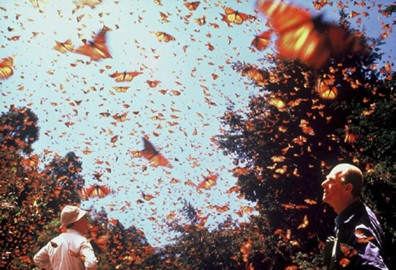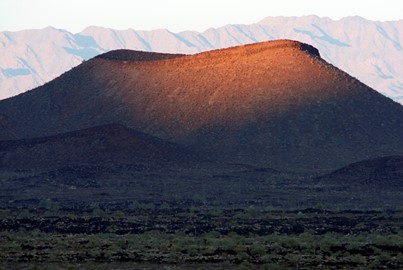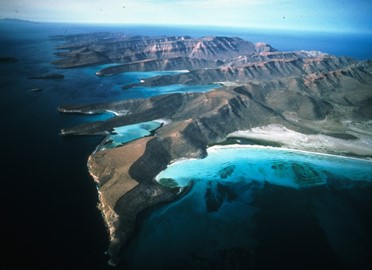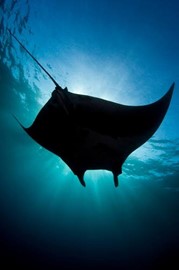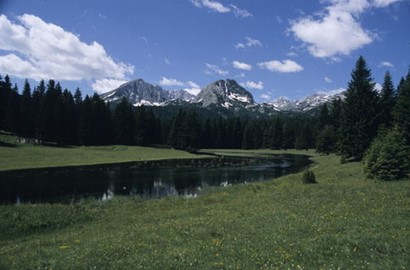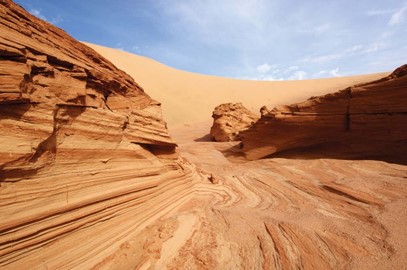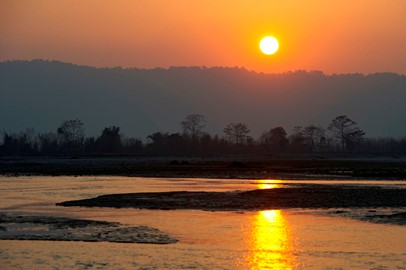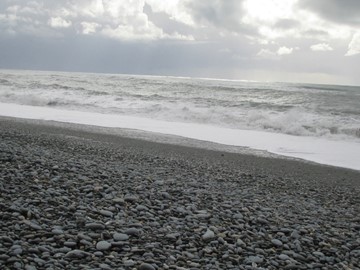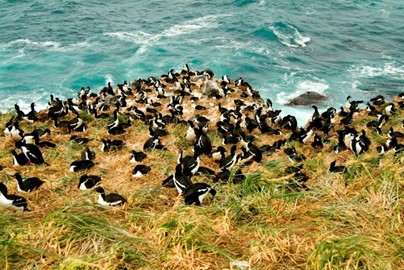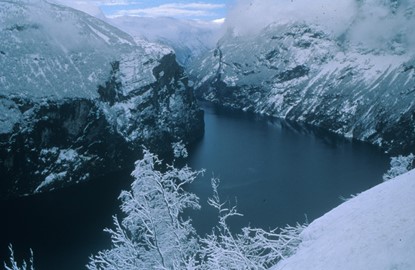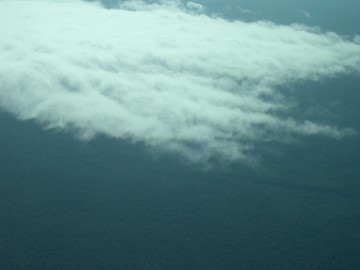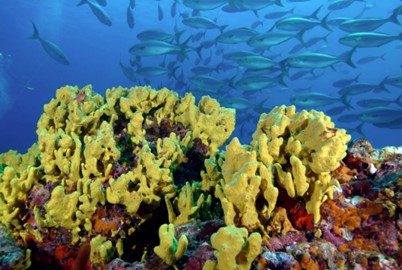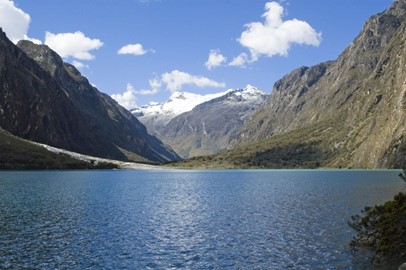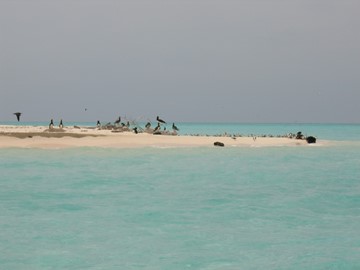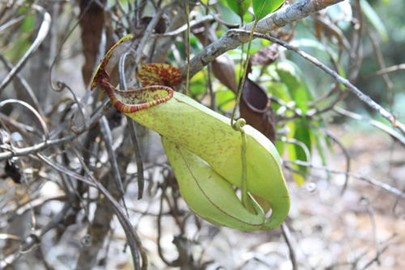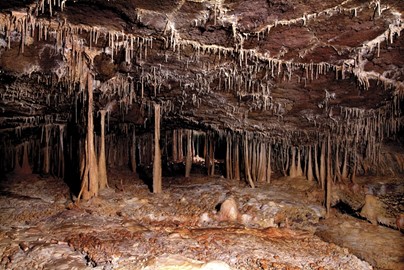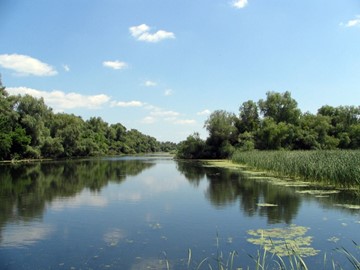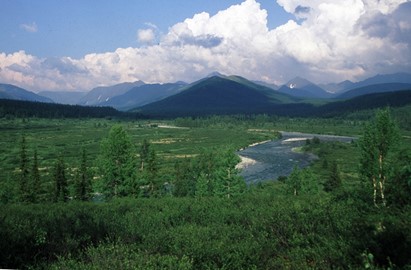category :: natural
Sian Ka'an
Sian Ka'an, a UNESCO World Heritage site in Mexico, is a biodiverse coastal ecosystem encompassing tropical forests, mangroves, marshes, and a section of the Mesoamerican Barrier Reef. Established as a biosphere reserve in 1986, it hosts a wide array of wildlife, including jaguars, manatees, and over 300 bird species, while also preserving ancient Mayan ruins. Its name, meaning 'Origin of the Sky' in Mayan, reflects its cultural and natural significance as a protected sanctuary for both ecological and archa... Read More
Whale Sanctuary of El Vizcaino
The Whale Sanctuary of El Vizcaino, a UNESCO World Heritage site in Mexico, is a vital natural habitat featuring two coastal lagoons that serve as key breeding and wintering grounds for the gray whale, alongside other marine species like California sea lions, northern elephant seals, and endangered sea turtles. Recognized in 1993, it supports a diverse ecosystem of wetlands, marshes, mangroves, and desert landscapes, fostering rich biodiversity including migratory birds and fish nurseries. This sanctuary ha... Read More
Monarch Butterfly Biosphere
The Monarch Butterfly Biosphere, a UNESCO World Heritage site in Mexico, serves as a critical wintering ground for millions of monarch butterflies migrating from North America. This unique ecological sanctuary, recognized for its outstanding universal value, protects the butterflies' overwintering habitat within a network of oyamel fir forests. The site showcases a remarkable natural phenomenon, where dense clusters of butterflies blanket the trees, creating a stunning display of orange and black. Conservat... Read More
El Pinacate and Gran Desierto
El Pinacate and Gran Desierto, a UNESCO World Heritage site in Mexico, is a striking volcanic landscape featuring dramatic craters, lava flows, and vast sand dunes. This unique ecosystem supports a diverse array of desert wildlife and rare plant species, adapted to its arid conditions. Recognized for its geological significance and biodiversity, it stands as a testament to the natural beauty and ecological resilience of Mexico’s desert regions.
Gulf of California
The Gulf of California, a UNESCO World Heritage site in Mexico, is a stunning marine ecosystem renowned for its exceptional biodiversity. This unique body of water hosts an array of endemic species, vibrant coral reefs, and dramatic underwater landscapes, making it a critical habitat for marine life. Its striking natural beauty and ecological significance draw scientists and conservationists worldwide to study and protect its rich aquatic environment.
Archipiélago de Revillagigedo
The Archipiélago de Revillagigedo, a UNESCO World Heritage site in Mexico, is a remote volcanic island chain in the Pacific Ocean renowned for its unique biodiversity and pristine ecosystems. Often called the 'Galápagos of Mexico,' it hosts a variety of endemic species, including rare birds, marine life, and giant manta rays, thriving due to its isolation and protected status. The site’s dramatic landscapes, formed by volcanic activity, also serve as a critical habitat for migratory species and a living lab... Read More
Durmitor
Durmitor National Park, a UNESCO World Heritage site in Montenegro, is renowned for its stunning natural beauty, featuring dramatic limestone peaks, deep canyons, and glacial lakes. The park is home to Tara River Canyon, one of the deepest gorges in Europe, and boasts diverse flora and fauna, including rare species like the Balkan chamois. Its rugged terrain offers opportunities for hiking, skiing, and rafting, making it a haven for outdoor enthusiasts. This protected landscape preserves both ecological ric... Read More
Namib Sand Sea
The Namib Sand Sea, a UNESCO World Heritage site in Namibia, is a stunning coastal desert renowned for its vast expanse of towering sand dunes, some reaching heights of over 300 meters. This unique landscape, shaped by wind and time, features striking red and orange hues, creating a dramatic contrast with the Atlantic Ocean. Recognized for its exceptional natural beauty and ecological significance, it supports a surprising variety of adapted wildlife, including rare species like the fog-basking beetle. Its ... Read More
Sagarmatha
Sagarmatha National Park, a UNESCO World Heritage site in Nepal, is renowned for its stunning Himalayan landscape, including the world’s highest peak, Mount Everest. Established in 1976, the park protects a diverse ecosystem of rare flora and fauna, such as snow leopards and Himalayan tahrs, alongside unique Sherpa culture and sacred monasteries. It serves as a critical conservation area and a global symbol of natural beauty and biodiversity.
Chitwan
Chitwan National Park, a UNESCO World Heritage site in Nepal, is renowned for its rich biodiversity and conservation efforts. Established in 1973, it hosts a variety of endangered species, including the Bengal tiger, one-horned rhinoceros, and Gharial crocodile, thriving in its lush forests, grasslands, and riverine ecosystems. The park also holds cultural significance with the indigenous Tharu communities, offering a blend of natural beauty and traditional heritage. It stands as a premier destination for w... Read More
Te Wahipounamu
Te Wahipounamu is a UNESCO World Heritage site located in New Zealand, recognized for its outstanding natural beauty and geological significance. It encompasses a diverse landscape of rugged mountains, glaciers, fjords, and rainforests, hosting a rich variety of unique flora and fauna, including ancient species like the takahe and kiwi. The site is also culturally significant, tied to Māori heritage and traditional resource use, making it a globally important conservation area.
Sub Antarctic Islands
The Sub-Antarctic Islands, a World Heritage site in New Zealand, are a remote and pristine collection of island groups renowned for their unique biodiversity and rugged natural beauty. These islands host a variety of rare and endemic species, including seabirds, penguins, and marine mammals, thriving in an environment shaped by harsh weather and isolation. Recognized for their ecological significance, they serve as critical habitats and breeding grounds, offering a living testament to the resilience of natu... Read More
Air and Ténéré
The Air and Ténéré Natural Reserves in Niger, a UNESCO World Heritage site, are renowned for their vast desert landscapes and unique biodiversity. This protected region harbors rare species like the addax antelope and fennec fox, alongside striking geological formations such as sand dunes and volcanic massifs. Recognized for its ecological and cultural significance, the site also holds traces of prehistoric human activity, offering insights into ancient civilizations. It stands as a critical conservation ar... Read More
West Norwegian Fjords
The West Norwegian Fjords, a UNESCO World Heritage site, showcase stunning natural beauty with their steep, glacier-carved cliffs, deep blue waters, and cascading waterfalls. Formed over millions of years through glacial activity, these fjords exemplify Norway's dramatic landscape and geological history. They also support diverse ecosystems, including rare marine life and bird species, making them a significant natural treasure. This pristine environment attracts visitors worldwide for its scenic splendor a... Read More
Darien
Darién National Park, a UNESCO World Heritage site in Panama, spans over 575,000 hectares of pristine wilderness along the border with Colombia. This biodiverse region features lush rainforests, rugged mountains, and extensive wetlands, serving as a critical habitat for endangered species like the jaguar, harpy eagle, and Central American tapir. Its unique location bridges North and South America, making it a vital ecological corridor. The park also holds cultural significance, encompassing indigenous terri... Read More
Coiba
Coiba National Park, a UNESCO World Heritage site in Panama, is a biodiverse marine and terrestrial reserve encompassing Coiba Island and 38 smaller islets in the Pacific Ocean. Spanning over 430,000 hectares, it protects a range of ecosystems, including tropical rainforests, coral reefs, and mangroves, which support unique species like the Coiba howler monkey and rare marine life. Established as a national park in 1991 and recognized by UNESCO in 2005, it serves as a critical sanctuary for conservation and... Read More
Huascarán
Huascarán National Park, a UNESCO World Heritage site in Peru, spans 340,000 hectares of the Cordillera Blanca mountain range, featuring the country's highest peak, Huascarán, at 6,768 meters. Established in 1975, it protects diverse ecosystems, including montane forests, glacial lakes, and unique high-altitude Puya raimondii plants. The park is home to rare wildlife like the Andean condor, spectacled bear, and vicuña. Its stunning landscapes and biodiversity make it a critical conservation area and a draw ... Read More
Manú
Manú National Park, a UNESCO World Heritage site in Peru, is a biodiversity hotspot spanning Andean highlands, cloud forests, and lowland rainforests. It harbors an exceptional array of wildlife, including jaguars, giant otters, and over 1,000 bird species, alongside rare flora like giant bromeliads. Recognized for its pristine ecosystems and cultural significance, it also protects indigenous communities, some living in voluntary isolation. This ecological and cultural treasure is a globally significant con... Read More
Puerto Princesa Subterranean River
The Puerto-Princesa Subterranean River, a UNESCO World Heritage site in the Philippines, is a stunning natural wonder featuring a navigable underground river that stretches over 8 kilometers through a vast limestone cave system. This unique ecosystem boasts dramatic karst landscapes, pristine waters, and a rich biodiversity, including rare species like the Philippine cockatoo and monitor lizard. Visitors can explore the river by boat, marveling at its towering stalactites and stalagmites, while its global s... Read More
Tubbataha Reefs
Tubbataha Reefs Natural Park, a UNESCO World Heritage site in the Philippines, is a pristine marine sanctuary renowned for its exceptional biodiversity. Located in the Sulu Sea, it features vibrant coral reefs, diverse marine species, and serves as a critical habitat for endangered sea turtles and seabirds. This protected area is a globally recognized gem, attracting researchers and divers to its rich underwater ecosystem.
Mount Hamiguitan
Mount Hamiguitan, a UNESCO World Heritage site in the Philippines, is renowned for its unique biodiversity and stunning natural landscapes. This protected sanctuary hosts a variety of rare and endemic species, including the Philippine eagle and the pitcher plant, thriving within its diverse ecosystems ranging from lowland forests to montane shrublands. The mountain's pygmy forest, one of the few in the world, adds to its ecological significance, making it a critical site for conservation and scientific stud... Read More
Laurisilva of Madeira
The Laurisilva of Madeira, a UNESCO World Heritage site in Madeira island, Portugal, is a rare subtropical laurel forest renowned for its rich biodiversity and ancient ecosystem. This lush, evergreen forest features unique plant species, many of which are endemic, thriving in a misty, temperate climate. It serves as a vital habitat for numerous birds and invertebrates, showcasing an exceptional example of ecological preservation. Recognized for its scientific and conservation value, it stands as a living re... Read More
Jeju
Jeju Volcanic Island and Lava Tubes, a UNESCO World Heritage site, is renowned for its exceptional geological features, including a well-preserved system of lava tubes formed by volcanic activity thousands of years ago. The site showcases dramatic volcanic landscapes, such as the Geomunoreum lava tube system and the prominent Hallasan Mountain, a shield volcano with a crater lake at its summit. These natural wonders highlight the region’s unique biodiversity and provide valuable insights into volcanic proce... Read More
Danube Delta
The Danube Delta, a UNESCO World Heritage Site in Romania, is one of the largest and most well-preserved river deltas in the world. It is celebrated for its extraordinary biodiversity, including numerous rare and endangered species, and serves as a critical habitat for migratory birds. This remarkable natural ecosystem highlights the intricate balance between water, land, and wildlife.
Virgin Komi Forests
The Virgin Komi Forests, a UNESCO World Heritage site in Russia, represent one of the largest remaining expanses of pristine boreal forest in Europe. This untouched wilderness is home to a rich diversity of flora and fauna, including rare species like the Siberian pine and brown bear, thriving in an ecosystem shaped by natural processes over millennia. The site’s old-growth forests and peat bogs play a critical role in carbon storage, highlighting its global ecological significance. It stands as a vital tes... Read More
